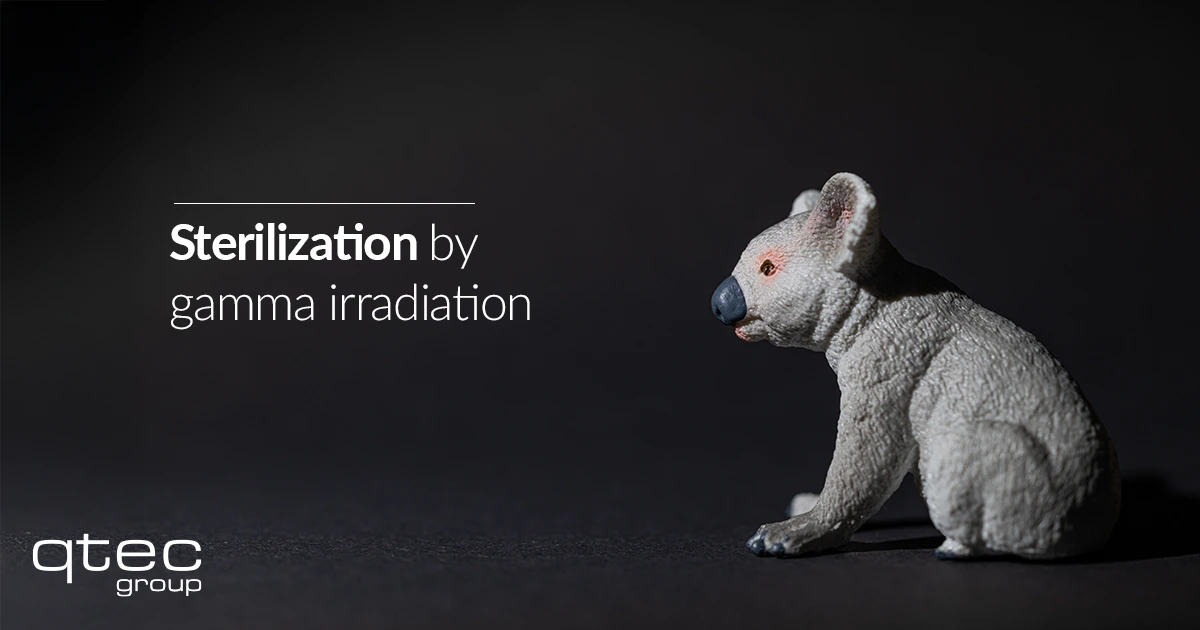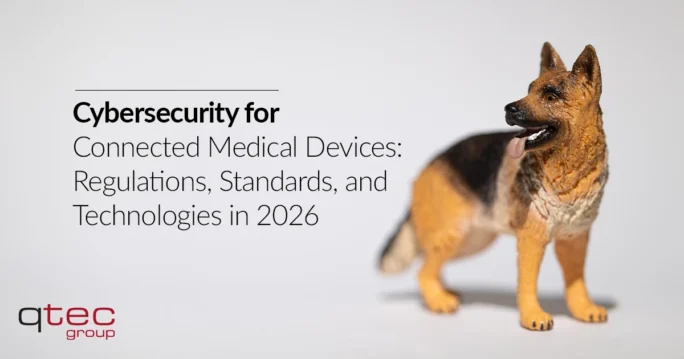
Sterilization by gamma irradiation
Basics, process and significance in medical technology
The sterilization of medical devices with gamma irradiation is one of the most widely used and established methods. It is particularly suitable for temperature- and/or moisture sensitive and complex products.
Methods of radiation sterilization
The following methods are used for sterilization with electromagnetic radiation:
- UV radiation – only effective on the surface.
- eBeam (electron beams) – high power, limited penetration depth.
- X-rays – high power, medium penetration depth.
- Gamma radiation – deeply penetrating, high-energy, universally applicable.
How does sterilization with gamma radiation work?
The sterilization method uses high-energy, ionizing gamma rays. This radiation destroys organic compounds, e.g., DNA, enzymes, cell membrane compounds, and thus the cell structures of microorganisms such as bacteria, viruses, fungi, and spores – killing or deactivating them.
The radiation dose, i.e. the amount of energy absorbed per kilogram of material by ionizing radiation, is measured in kilograys (kGy).
- Typical dose range:
- 15–25 kGy for products with low initial microbial contamination (e.g., food packaging, cosmetics)
- 25–40 kGy for single-use medical devices, pharmaceutical packaging
- up to 50 kGy for particularly resistant spores or germ-intensive starting materials
Dose accuracy:
A homogeneous dose distribution throughout the entire product volume is essential and is verified during validation by dose mapping. Typically, the dose varies by ±10–20% within a batch.
Which products are sterilized using gamma radiation?
- Disposables made of plastic, e.g. syringes, catheters, dialysis tubes
- Implants, e.g. hip or knee joint prostheses, dental implants
- Surgical instruments, disposable and reusable, e.g. scalpels, scissors, forceps
- Consumables for wound care, e.g. wound dressings, compresses
- Preconfigured combinations, e.g., surgical sets, diagnostic kits
Sterilization process
- Generation of radiation: Gamma radiation is based on the application of high-energy photons (gamma rays) released by the radioactive decay of isotopes (especially cobalt-60). This radiation consists of photons with fixed energy levels of 1.17 MeV and 1.33 MeV, which enables particularly high penetrating power.
- Transport of the products in the irradiation chamber: The products to be sterilized are placed in suitable containers or on pallets in the irradiation chamber. Depending on the type of system and the arrangement of the radiation sources, there are two main approaches:
- Rotation systems: The products rotate around the radiation source to obtain an even dose from all sides.
- Transport systems: The products pass through the radiation field linearly or in loops, while the source is positioned centrally or laterally.
Interaction with the product
Upon impacting the product, the photons easily penetrate packaging, material layers and even complex geometries. Their very high energies result in interactions, emission of secondary radiation, and the formation of reactive species such as free radicals. Since these effects can target not only biological contaminants but also product materials, it is essential to assess whether any adverse changes occur in the materials. Therefore, the stability of the products must be thoroughly investigated.
Benefits of gamma irradiation
1. Deep penetration
- Gamma rays can penetrate dense and multi-layered materials as well as packaged pallets.
- Ideal for products with complex geometry or high density.
2. Uniform irradiation
- The radiation has an omnidirectional effect, allowing for treatment without the need for rotation.
- No need to reposition the products.
3. Proven, robust technology
- In industrial use for decades. Globally available standard, high process reliability.
4. Chemical-free and temperature-independent
- No residues and no thermal stress. Suitable for sensitive materials.
5. Batch sterilization for large volumes
- Large batches (e.g. entire pallets) can be sterilized at once.
- Logistical advantages in series production.
Validation process
The PQ (performance qualification) phase of the various validation processes in accordance with ISO 11137 serves to proof that the selected sterilization dose is capable of reliably achieving the required sterility assurance level (SAL≥10-6) under serial conditions.
The commonly used VDmax method is based on the use of a predetermined maximum standard dose value (VDmax 15-35kGy) based on an initial bioburden. First, a dose verification is performed to check whether the selected VDmax dose is sufficient to achieve a microbial reduction to an acceptable sterility level. For this purpose, several product samples are treated with a test radiation dose (Verification Dose) that is below the VDmax in order to test the conservative suitability of the maximum dose. After irradiation, the number of non-sterile products is determined. If the number of positive tests is within defined limits, the dose chosen is considered suitable.
During the PQ phase, measurements are also taken to determine how the radiation is distributed in the sterile material (Dose mapping) and whether the actual radiation application in routine operation corresponds to the validation results. Production batches are irradiated and tested for sterility.
Standard update (ISO 11137-1)
Dosimetry
The standard now explicitly references modern dosimetry and terminology documents (e.g., ISO 13004 and other dosimetry guidance).
The standard provides clearer and more detailed requirements for dose mappingto be carried out using product or simulated product loaded in irradiation containers in accordance with a specified loading pattern,
Records of dose mapping shall include descriptions of the packaging (irradiation container), product dimensions and density, orientation of products within the package, orientation of packages within the irradiation container, conveyor path.
Bioburden
Focus moved from fixed test frequencies, to justifying a bioburden control/stability program (demonstrate representativeness of sampling, stability of counts/types, and when/why you can reduce testing frequency).
For the low radiation dose processes (VDmax 15, VDmax17.5) more detailed about the quality of bioburden is required.
The new edition emphasizes demonstrating the stability of the product’s bioburden (number and type) rather than prescribing blanket monthly testing for low-bioburden products. In practice this means you must show through data (historical or challenge studies) that your bioburden is stable and remains representative of the material/process
Conclusion
Gamma sterilization is a proven, powerful method for sterilizing large quantities of products, especially complex or dense materials. It scores highly with its deep penetration and uniform irradiation. Despite challenges such as the handling of radioactive sources, it remains a central component of modern sterilization strategies.





